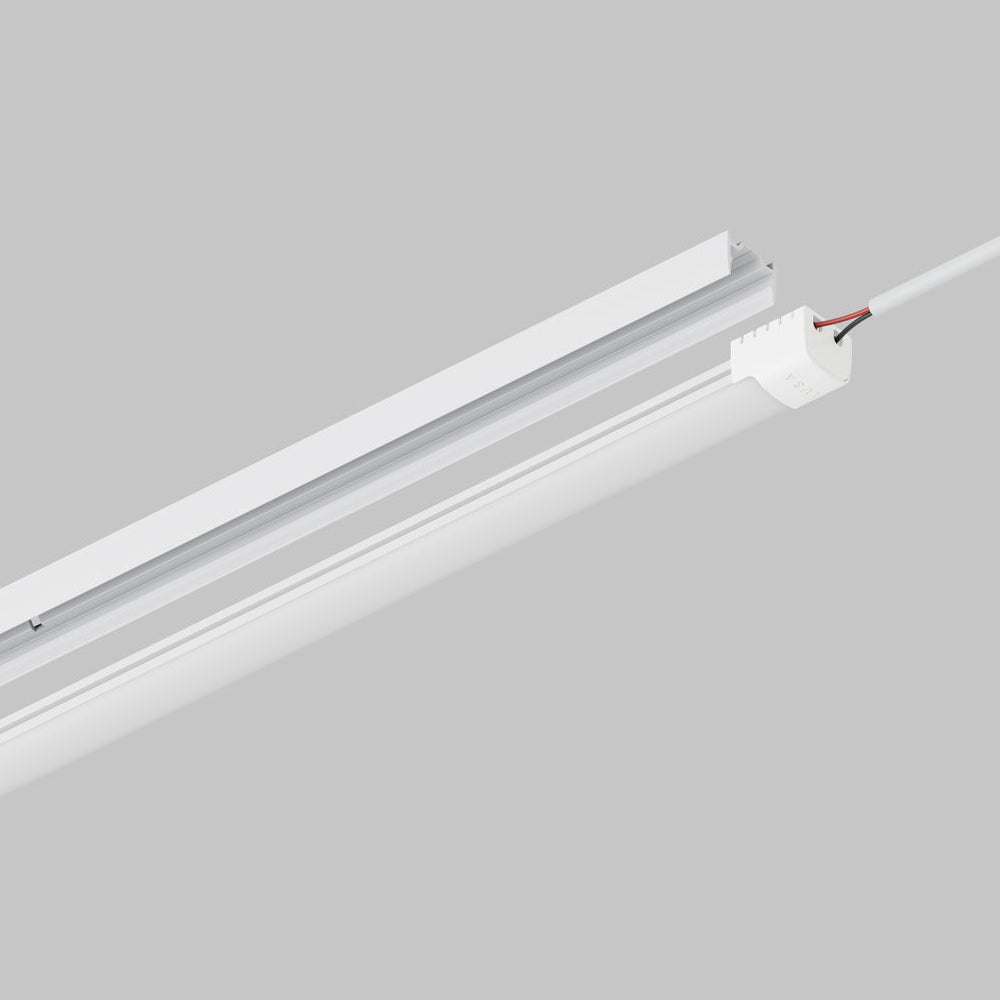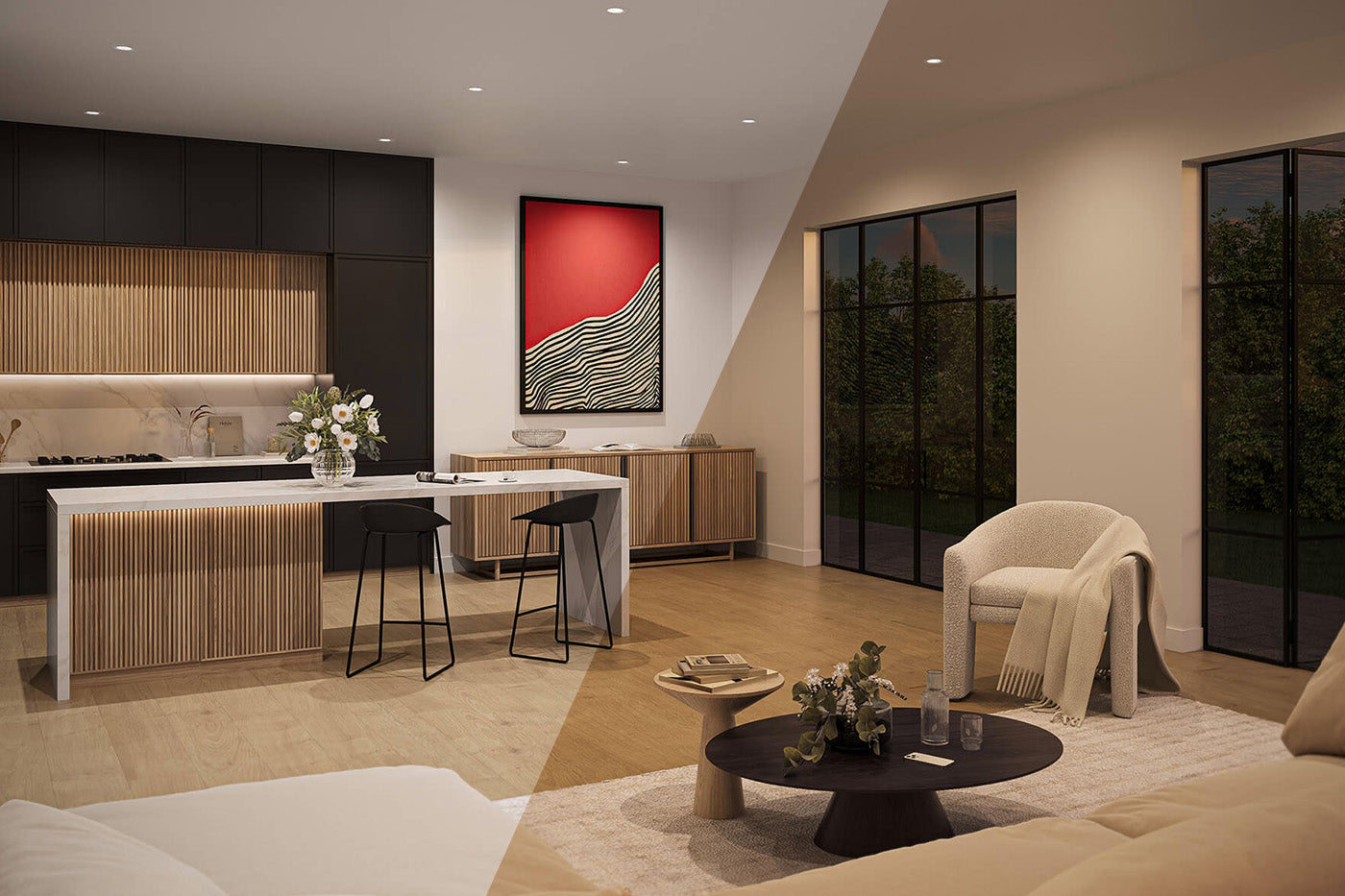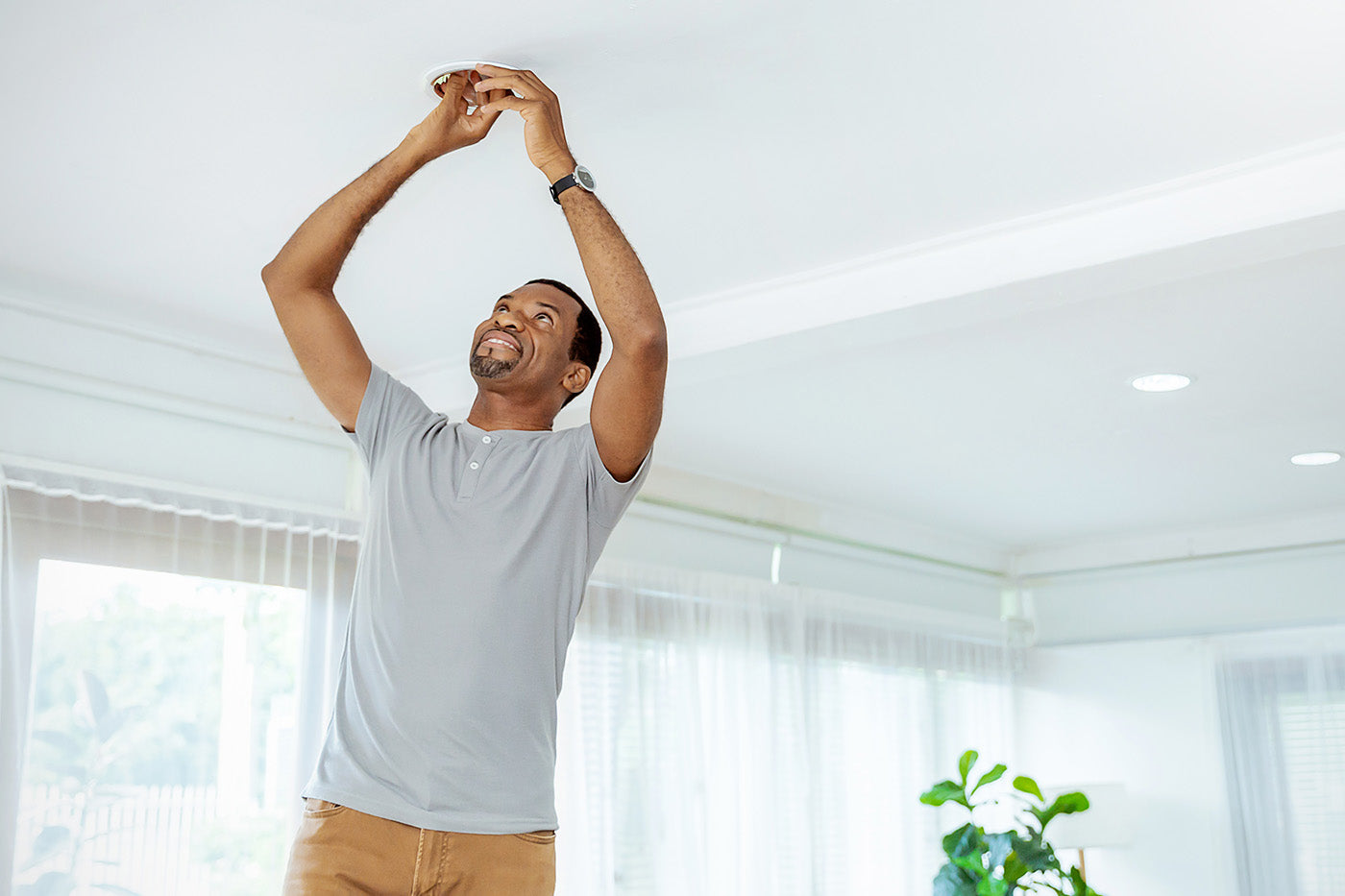The living room serves as the heart of the home — a space for relaxation, entertainment, and gatherings with loved ones. Lighting plays an essential role in enhancing the ambiance and functionality of this central space. We'll explore recessed lighting placement in the living room, uncovering the secrets to creating a well-lit and inviting environment that sets a mood and complements your lifestyle.
With its sleek and unobtrusive design, recessed lighting offers a versatile solution for illuminating the living room. As we discuss recessed lighting placement, we'll highlight the numerous benefits it brings to your living space.
What Is Recessed Lighting?
Recessed lighting, also known as can lighting or downlights, consists of fixtures that are installed flush with the ceiling or wall surface. These fixtures typically include a housing unit, trim, and light bulb. The beauty of recessed lighting lies in its ability to provide ample illumination while maintaining a minimalist aesthetic.
One of the key advantages of recessed lighting is its versatility. Unlike traditional lighting fixtures that may detract from the overall design of the living room, recessed lights blend seamlessly into the ceiling, offering a clean and contemporary look. This makes them ideal for various living room configurations and design styles.
Recessed lighting also provides a balanced and even distribution of light, which is essential for creating a comfortable and inviting atmosphere in the living room. Whether you're reading a book, watching TV, or hosting guests, recessed lighting can be strategically placed to enhance visibility without causing glare or shadows.
What Should You Keep in Mind About Your Living Room?
Before getting into the placement of recessed lighting in your living room, you must assess the layout and functionality of the space. Every living room is unique, with different dimensions, features, and purposes.
Here are some key considerations to keep in mind:
- Layout Analysis: Begin by analyzing the layout of your living room, taking note of architectural features, furniture arrangement, and traffic flow patterns. Identify areas where focused lighting is needed, such as seating areas, reading nooks, or entertainment zones.
- Functionality Assessment: Consider the primary functions of your living room and how lighting can support these activities. Do you frequently host gatherings and need ample ambient lighting? Do you enjoy reading or working in specific corners of the room that require task lighting? Understanding the functionality of the space will guide your lighting decisions.
- Task, Ambient, and Accent Lighting: Think about the different types of lighting needed in the living room, including task lighting for specific activities, ambient lighting for overall illumination, and accent lighting to highlight architectural details or decor elements. Each type of lighting serves a distinct purpose and contributes to the room's overall ambiance.
By assessing your living room layout and functionality, you can identify lighting needs and preferences that will inform recessed lighting placement for optimal effectiveness and aesthetics.
How To Plan Recessed Lighting Placement
Once you clearly understand your living room layout and lighting requirements, it's time to plan the placement of recessed lighting fixtures. Proper planning ensures that your lighting design achieves the desired ambiance and functionality.
Here's a step-by-step guide to help you plan recessed lighting placement:
- Ceiling Height Consideration: Take into account the height of your living room ceiling when planning recessed lighting placement. Higher ceilings may require fixtures with higher light (lumen) output and tighter spacing to achieve optimal illumination.
- Fixture Spacing: Determine the spacing between recessed lighting fixtures to ensure even coverage and eliminate dark spots. As a general rule of thumb, quality fixtures can be spaced approximately six to seven feet apart for standard ceiling heights (eight to 10 feet). Space fixtures more closely — four to six feet apart — if the ceiling height is over 10 feet tall or you require very bright lighting. Using lower-quality fixtures may also require tighter spacing and produce uneven lighting distribution.
- Furniture and Activity Zones: Consider the placement of furniture and activity zones in the living room when positioning recessed lighting fixtures. Aim to illuminate key areas such as seating areas, coffee tables, and entertainment centers to create a well-balanced and inviting environment.
- Layered Lighting Approach: Embrace a layered lighting approach by combining recessed lighting with other light sources such as floor lamps, table lamps, and wall sconces. This can create depth and dimension in the living room, enhancing visual interest and flexibility in lighting control.
By carefully planning the placement of recessed lighting fixtures in your living room, you can create an inviting space that meets your aesthetic and functional needs. Experiment with different configurations and lighting effects to achieve the perfect ambiance for relaxation, entertainment, and everyday living.
What Are Some Practical Installation Tips?
Installing recessed lighting in your living room can be a rewarding DIY project, but it requires careful planning and execution to ensure safety and effectiveness.
Here are some practical installation tips for a remodel application to help you get started:
- Gather Necessary Tools and Materials: Before beginning the installation process, gather all the tools and materials you'll need, including remodel recessed lighting fixtures, electrical wiring, wire strippers, a stud finder, a ladder, and safety gear such as gloves and safety goggles. For existing ceilings a remodel housing is recommended.
- Turn Off Power: Safety should always be your top priority when working with electricity. Before installing recessed lighting, turn off the power to the circuit you'll be working on at the breaker box to prevent the risk of electrical shock.
- Locate Ceiling Joists: Use a stud finder to locate the ceiling joists where you'll be installing the recessed lighting. Mark the positions of the joists on the ceiling to guide your installation process.
- Plan Fixture Placement: Refer to your lighting plan and carefully measure and mark the positions for each recessed lighting fixture on the ceiling. Consider factors such as ceiling height, furniture placement, and activity zones when planning fixture placement.
- Cut Openings: Use a hole saw to carefully cut openings in the ceiling for the recessed lighting fixtures. Follow the manufacturer's instructions for the size and shape of the openings, and be mindful of any electrical wiring or structural components in the ceiling.
- Install Wiring: If you're comfortable working with electrical wiring, carefully install the wiring for each recessed lighting fixture according to the manufacturer's instructions. If you're unsure, hiring a qualified electrician to handle this step is best to ensure safety and compliance with local building codes.
- Mount Housings: Once the wiring is in place, mount the recessed lighting housing into the ceiling openings. Follow the manufacturer's instructions for securing the fixtures in place and making any necessary adjustments to ensure proper alignment.
- Connect Wiring: Connect the wiring from each recessed lighting fixture to the corresponding electrical wiring in the ceiling. Ensure all connections are secure and properly insulated to prevent electrical hazards.
- Test Lights: Before closing up the ceiling, turn the power back on and test each recessed lighting fixture to ensure it's functioning properly. Make any adjustments to lumen output as needed to achieve the desired lighting effect and ensure even illumination throughout the living room.
- Finish Installation: Once you've confirmed that the recessed lighting fixtures are working correctly, finish the installation by ensuring that trims are flush to the ceiling. Step back and admire your handiwork, knowing that you've successfully installed recessed lighting to enhance the ambiance and functionality of your living room.
Enhancing Comfort and Aesthetics With LUSA
At LUSA, we understand that lighting should create a comfortable and aesthetically pleasing environment that enhances daily life.
Here's how our approach to recessed lighting design can elevate the ambiance and aesthetics of your living room:
- Comfort-Oriented Lighting Design: Our recessed lighting fixtures are designed with comfort in mind, providing gentle, diffused light that enhances visibility without causing glare or harsh shadows. By creating a comfortable lighting environment, we help you create a cozy and inviting living room space where you can relax and unwind.
- Stylish and Versatile Design Options: With a wide range of trim options and finishes available, our recessed lighting fixtures can complement any decor style and architectural design. Whether you prefer a modern, minimalist look or a more traditional aesthetic, we have the perfect lighting solution to suit your needs.
- Mood Lighting Control: Take control of your living room ambiance with warm dim recessed lighting fixtures that let you adjust the brightness to suit your mood and activities. Whether you're hosting a lively gathering or enjoying a quiet evening at home, our warm dim lights provide the flexibility to create the perfect atmosphere for any occasion.
- Energy-Efficient and Eco-Friendly: Our recessed lighting fixtures are energy-efficient and eco-friendly, helping you reduce your carbon footprint and lower your utility bills. With certifications from Energy Star, UL, Title 24 JA8, and Declare Listed, and lights lasting 50,000 hours, you can trust our lighting solutions' superior performance and durability.
The Takeaway
As we conclude our discussion about recessed lighting placement in the living room, we hope you've gained valuable insights and inspiration to enhance your living space. By strategically incorporating recessed lighting fixtures, you can create a welcoming and functional environment that reflects your personal style and meets your lifestyle needs.
By incorporating LUSA's recessed lighting solutions into your living room design, you can elevate the ambiance and aesthetics of your space while enjoying the benefits of comfort, style, and energy efficiency. Here's to creating a living room that's as beautiful as it is functional, where you can relax, entertain, and make lasting memories with friends and family.
Contact us today to create an inviting, pleasant ambiance in your home. Designer lighting doesn’t have to be exclusive.
Sources:
A Beginner’s Guide to Lighting Layers in Interior Design | A Designer at Heart
What Does the ENERGY STAR Label Mean? | EnergyStar
How to Locate Ceiling Joists: A Guide | General Relativity
Recessed Lighting Layout: Finding the Right Spacing and Locations | Home Lighting Tips



